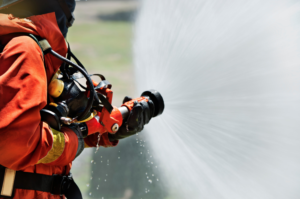Regardless of the type of business you run, you cannot afford to go without reliable fire protection. When it comes to Houston fire sprinklers, you have all kinds of options. Choosing the right system can seem confusing and daunting at first, but it all boils down to understanding the main options. In that case, there are basically two: wet sprinkler systems and dry sprinkler systems. By knowing the basics about each type of system, including their main advantages and ideal applications, you can more easily choose the one that is right for your business.
Considerations to Make when Choosing Houston Fire Suppression Systems
Before learning the differences between wet and dry fire sprinkler systems, consider the nature of the building and items you would like to protect. First, the type of building will largely determine which type of system makes sense. Is it a warehouse, a showroom, an office or some other type of building? Second, what is being protected — rugged, durable items or sensitive electronic equipment? Finally, where is the building located, and are any parts of it susceptible to freezing? More than anything, this point will dictate which Houston fire sprinkle rs make the most sense.
rs make the most sense.
Proper Applications for Wet Sprinkler Systems
Now, it may seem obvious that a sprinkler system will be wet. By their very nature, they dispense water to fight fires. When we refer to a wet system, however, we are referring to one that is fully charged with water. In other words, water is ready to go the instant the system is activated. The pipes, therefore, are constantly filled with water. As long as the temperature of the premises remains at 40 degrees Fahrenheit or higher consistently, this type of system is ideal. The water is dispensed immediately, which drastically reduces the likelihood of serious damage to the building and its contents.
Proper Applications for Dry Sprinkler Systems
Dry sprinkler systems are primarily intended for buildings that do not maintain a consistent temperature of 40 degrees Fahrenheit or higher. They are most popularly used in warehouses and other buildings that may be partially or completely unheated. The reason is simple: If a wet system is used under such conditions, the water held in the pipes can freeze, causing the pipes to burst. Also, blockages may occur. In a dry system, water is not kept in the distribution piping. Rather, the pipes are charged with pressurized air from a compressor or similar device. When the sprinklers are activated, the air is released. In turn, the valve opens, and water is sent to the pipes and on to the sprinklers. This can result in a delay of up to 60 seconds. During that time, considerable damage can be done.
Which System is Right for Your Business?
The easiest way to determine which fire sprinkler system is right for your business is by asking yourself whether the temperature of the premises ever dips below 40 degrees Fahrenheit. If not, a wet system is almost always ideal. If heating is inconsistent or nonexistent, however, a dry fire sprinkler system is probably the best option. A subset of the dry category is the pre-action type system, which involves the use of lower air pressurization. This type of system is ideal for computer labs and other areas where sensitive equipment is stored.
The information above is really only the tip of the iceberg when it comes to choosing the right Houston fire sprinklers. To ensure that you make the right choice, hire a reputable and experienced fire suppression company. Advantage Interests Inc. has many years of experience in providing Houston fire alarms, fire suppression systems, and fire sprinklers. We can help you identify the configuration that suits your company’s needs and budget, so contact us today.

